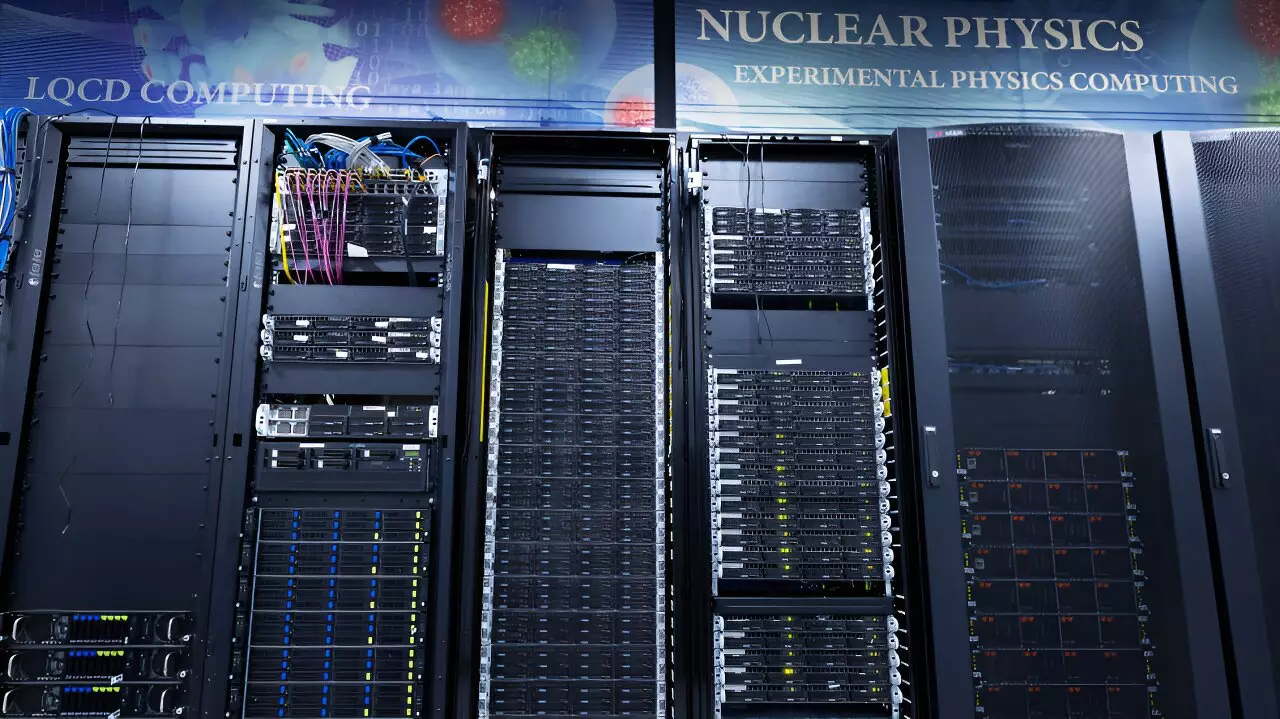At first glance, the ordinary proton and neutron may appear to be simple entities, but delve deeper, and you uncover a complex world driven by fundamental forces and particles. At the core of hadrons—an umbrella term for protons and neutrons—lies a vibrant landscape of interactions governed by quarks, gluons, and other subatomic particles, collectively known as partons. This rich internal structure is the focus of a significant research initiative undertaken by the HadStruc Collaboration, a group of dedicated scientists from various universities and research institutions based at the U.S. Department of Energy’s Thomas Jefferson National Accelerator Facility.
Their pioneering efforts aim to decode the interactions and distributions of partons within hadrons, employing advanced mathematical frameworks and sophisticated computational techniques. Central to their findings is the understanding of how these partons contribute to the overall properties of protons and neutrons, including their spin, mass, and the forces that bind them together.
The study of partons is fundamentally anchored in quantum chromodynamics (QCD), the theory that describes the strong force—the most powerful fundamental force in nature, which binds quarks and gluons together within hadrons. Understanding the structure of protons and neutrons through QCD requires unraveling the complex relationships between these particles. The HadStruc Collaboration has adopted a three-dimensional framework using generalized parton distributions (GPDs), which surpasses the older one-dimensional parton distribution functions (PDFs) in terms of the depth of insight it offers.
This innovative approach not only delivers a richer understanding of the internal dynamics of protons but also holds implications for one of the biggest puzzles in modern physics: the origin of the proton’s spin. Dutrieux, a member of the collaboration, elaborated on the limitations of traditional models, explaining that while PDFs provide a narrow perspective, GPDs offer a more comprehensive view of the role that both quarks and gluons play in spinning the proton.
Historically, experiments conducted in the late 1980s revealed a startling discovery: the spins of quarks alone account for less than half of the proton’s total spin. This realization has led physicists to seek alternative explanations, which may include contributions from gluons and the motion of partons, specifically their orbital angular momentum. The quest to determine the roles of these components in mass and spin continues to be a cornerstone of contemporary nuclear research.
GPDs serve as a gateway into this intricate analysis, offering insights into the energy and momentum distribution within the proton. Understanding how these distributions affect the proton’s interaction with gravity remains a vital aspect of this research. As Karpie highlights, mapping the energy momentum tensor within protons allows researchers to explore foundational questions surrounding matter and energy distribution on a quantum scale.
The groundbreaking work of the HadStruc Collaboration hinges on the application of advanced computational techniques, primarily leveraging the power of supercomputers to execute complex simulations. With a staggering 65,000 simulations performed, including varied conditions to mimic real-world interactions, the research team is pushing the boundaries of computational physics. These calculations were executed on high-performance platforms like the Frontera and Frontier supercomputers, underscoring the vital role computational resources play in modern scientific discovery.
The results garnered from this extensive modeling represent not merely theoretical interest but a crucial step in validating and refining existing theories about hadronic structure. The forthcoming steps involve enhancing approximations, a task that promises to be computationally intensive as it requires an order of magnitude increase in processing power.
Looking forward, the implications of the HadStruc Collaboration’s research extend far beyond theoretical constructs. Their GPD framework is already being tested in experimental settings, including high-energy particle collisions and the anticipated Electric-Ion Collider (EIC) project. With international collaborations and experiments already underway at facilities such as Jefferson Lab, scientists are setting the stage for further significant discoveries regarding hadronic structure.
Jam-packed with potential breakthroughs, this work aims not only to answer standing questions in particle physics but to pave the way for a wider comprehension of the universe’s fundamental components. The HadStruc Collaboration is well-positioned to lead the charge in this quest, striving to stay ahead of experimental developments and ensuring that theoretical research complements practical inquiry.
The exploration of hadron structure goes beyond mere academic curiosity; it seeks to answer some of the most profound questions about matter, energy, and the fundamental forces that shape our universe. As this field continues to evolve, it is clear that our understanding of the subatomic world is just beginning to scratch the surface of its complex and beautiful intricacy.


Leave a Reply